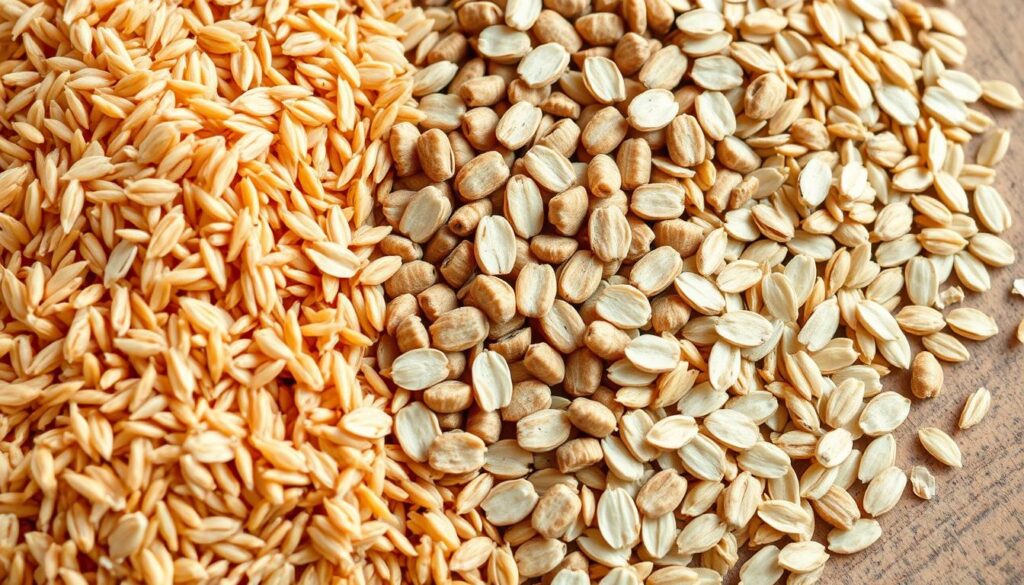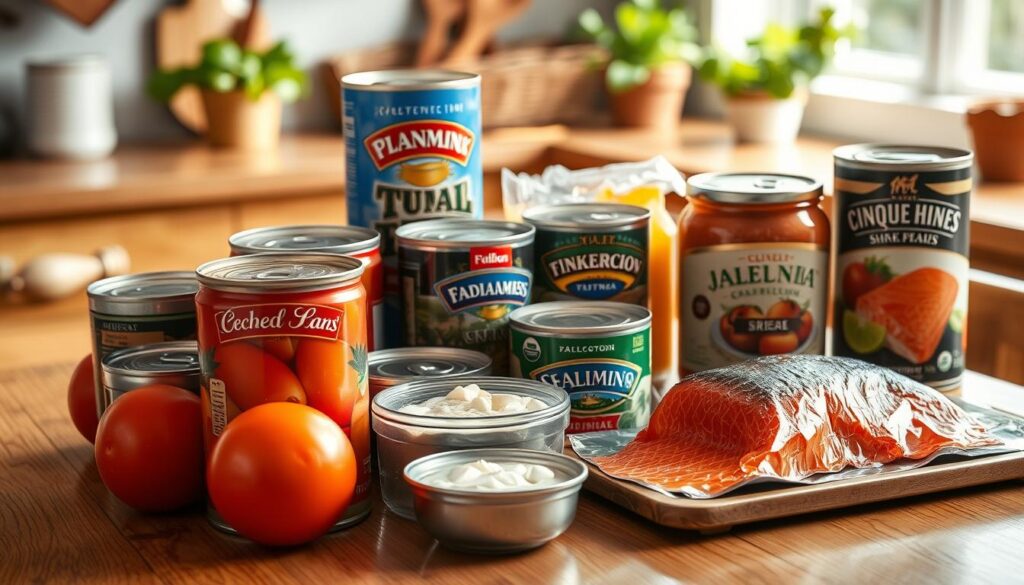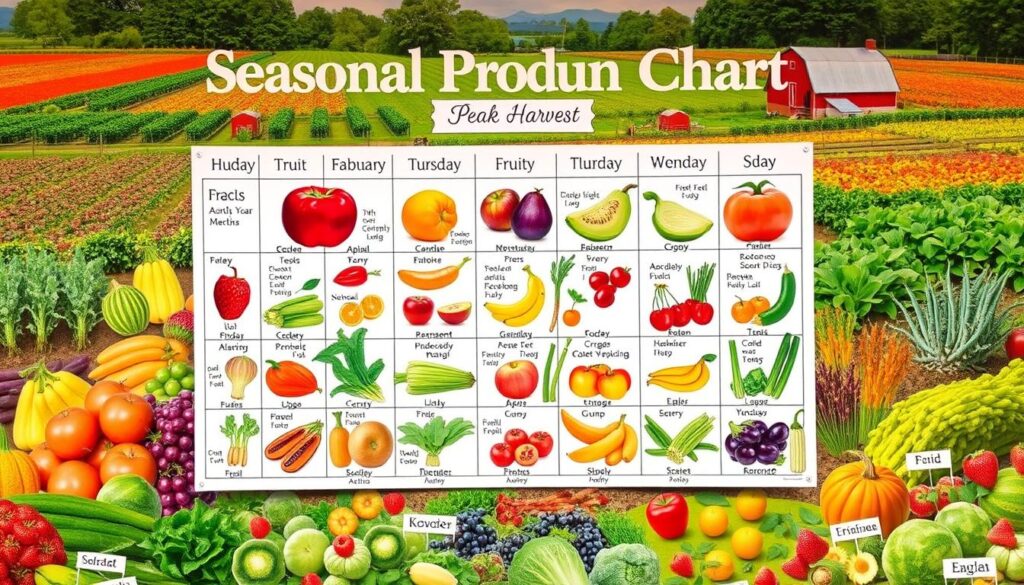Can you really eat nutritious food without breaking the bank? Many of us struggle to maintain a balanced diet while managing limited finances. The good news is that eating healthy doesn’t have to come with a hefty price tag.
I will guide you through a comprehensive list of affordable staples that deliver maximum nutrition without straining your budget. By incorporating strategic shopping and meal planning, you can enjoy diverse, nutritious meals that won’t feel repetitive or boring.
Focusing on whole, minimally processed foods is key to maintaining good health while saving money. With the right knowledge and approach to food shopping and preparation, eating well on a tight budget is absolutely possible.
Key Takeaways
- Create a grocery list to stick to your budget
- Plan meals around affordable staples
- Shop smart to save money on nutritious food
- Focus on whole, minimally processed foods
- Enjoy diverse, nutritious meals without breaking the bank
The Smart Approach to Healthy Eating Without Breaking the Bank
Eating healthy doesn’t have to break the bank; with a few simple strategies, you can nourish your body without overspending. By making informed choices and planning your grocery shopping, you can enjoy nutritious meals while staying within your budget.
Why Budget-Friendly Nutrition Matters
Nutrition is particularly important when finances are tight. Proper nourishment supports overall health and can prevent costly medical issues down the road. According to the CDC, a well-balanced diet can help reduce the risk of chronic diseases, which can be a significant financial burden.
Poor nutrition can lead to decreased productivity, increased sick days, and higher healthcare costs. By prioritizing budget-friendly nutrition, you can avoid these unnecessary expenses and maintain a healthy lifestyle.
How to Shop Smart and Save Money
To shop smart, start by planning your meals and making a grocery list. Stick to your list when you’re at the grocery store to avoid impulse purchases. Shopping the perimeter of the store first can also help you focus on whole foods. As a general rule, try to avoid shopping when you’re hungry, as this can lead to unnecessary purchases.
| Smart Shopping Tips | Benefits |
|---|---|
| Plan your meals | Reduces food waste and saves money |
| Make a grocery list | Helps you stick to your budget |
| Shop the perimeter of the store | Increases your chances of buying whole foods |
As Consumer Reports notes, “unit pricing can help you compare the true cost of foods beyond just the sticker price.” By considering the nutritional value per dollar spent, you can make informed decisions about your grocery purchases.
“The key to eating well on a budget is planning and smart shopping.”
How to Get Healthy on a Tight Budget with Staple Pantry Items
Eating healthy doesn’t have to break the bank; with the right pantry staples, you can create nutritious meals on a tight budget. Stocking your pantry with affordable, healthy foods is the first step towards meal planning without overspending.
Whole Grains: The Foundation of Budget Nutrition

Whole grains like brown rice, oats, and barley are not only affordable but also rich in fiber and nutrients, making them an excellent foundation for healthy meals. Buying these grains in bulk can save you a significant amount of money in the long run.
Beans and Legumes: Protein Powerhouses

Beans and legumes are packed with protein, fiber, and minerals, making them a nutritious and affordable alternative to meat. They can be purchased in bulk and cooked in various ways to add variety to your meals.
Canned Goods Worth Your Dollar

Canned goods like tomatoes, tuna, and salmon are not only budget-friendly but also retain most of their nutrients. They can be used in a variety of dishes, from soups to salads.
Budget-Friendly Cooking Oils and Seasonings

Using cooking oils like olive oil and canola oil efficiently can enhance the flavor of your meals without breaking the bank. Building an affordable spice collection can also transform simple ingredients into flavorful dishes.
By incorporating these pantry staples into your meal planning, you can create a variety of healthy, nutritious meals without overspending. The key is to be mindful of your grocery shopping and to plan your meals around what’s available and affordable.
Fresh and Frozen Foods That Deliver Maximum Nutrition
Fresh and frozen foods offer a wealth of nutritional benefits without breaking the bank. Incorporating these into your diet can be a smart way to eat healthy on a budget.
Seasonal Produce Shopping Guide

Shopping for produce that’s in season is a great way to save money. Local produce that’s in season is generally cheaper and at its peak in both nutrients and flavor. By shopping in-season, you can cut your produce costs by 30-50%. For example, buying tomatoes in summer can be significantly cheaper than in winter.
Frozen Fruits and Vegetables: Nutrition Without Waste

Frozen fruits and vegetables are just as nutritious as their fresh counterparts. In fact, they’re often flash-frozen at peak ripeness, retaining more nutrients. This makes them a great option for meal planning. You can use only what you need and keep the rest preserved, reducing food waste and saving money.
Affordable Protein Sources Beyond Meat

While meat can be a significant expense, there are many affordable protein sources beyond it. Options like eggs, canned fish, legumes, and tofu are not only budget-friendly but also packed with protein. Incorporating these into your diet a couple of days a week can help reduce your grocery bill.
Budget-Friendly Dairy and Alternatives

When it comes to dairy and its alternatives, there are options to suit every budget. Store-brand dairy products can be significantly cheaper than name-brand products without a significant difference in quality. Additionally, exploring plant-based alternatives can provide affordable and nutritious options for your meals.
Putting It All Together: Healthy Meal Planning on a Budget
By planning your meals and grocery shopping smart, you can eat well without financial stress. The key is to create a weekly meal plan that incorporates affordable staples, reducing food waste and saving money.
To start, pick one day each week to plan your meals for the upcoming week. Then, make a comprehensive grocery list of everything you need. Be sure to scan your pantry and fridge to avoid duplicate purchases. This simple step can significantly reduce your grocery store bills.
Cooking at home is generally cheaper than dining out, and it allows you to feed a family of four for the same price as buying food for one or two people at a restaurant. By cooking large meals, you can save both time and money. Leftover food can be used for lunches or incorporated into other recipes, such as stews, stir-fries, salads, and burritos.
Here are some practical tips to enhance your meal planning: – Create a meal plan that includes a variety of protein sources, such as beans and affordable meat. – Shop for produce that’s in season to get the best price. – Use canned goods and frozen fruits and vegetables as nutritious alternatives. – Invest in bulk purchases of staples like grains and legumes. – Organize your pantry and kitchen to prevent duplicate purchases and ensure you use what you have.
When shopping, compare brands and products to find the best value for your money. Reading food labels is crucial to identify truly nutritious options. Sometimes, it’s worth investing in higher-quality ingredients for better flavor and satisfaction, which can save money in the long run.
For those facing challenges like time constraints, picky eaters, or dietary restrictions, there are practical solutions available. You can find numerous budget-friendly recipes online or through meal planning apps that cater to various dietary needs.
Eating well on a budget is an achievable skill that improves with practice. By consistently applying these strategies, you can enjoy significant health and financial benefits over time. For more budget-friendly cooking tips and resources, you can visit websites like USDA’s Economic Research Service or Access to Healthcare for additional guidance on healthy eating on a budget.


[…] meals around pantry staples can help reduce food waste by using ingredients before they expire. Creative use of spices and […]
[…] as a healing tonic over 2,400 years ago. Today, this tangy elixir—apple cider vinegar—remains a staple in kitchens and medicine cabinets alike, backed by modern research exploring its potential to support […]